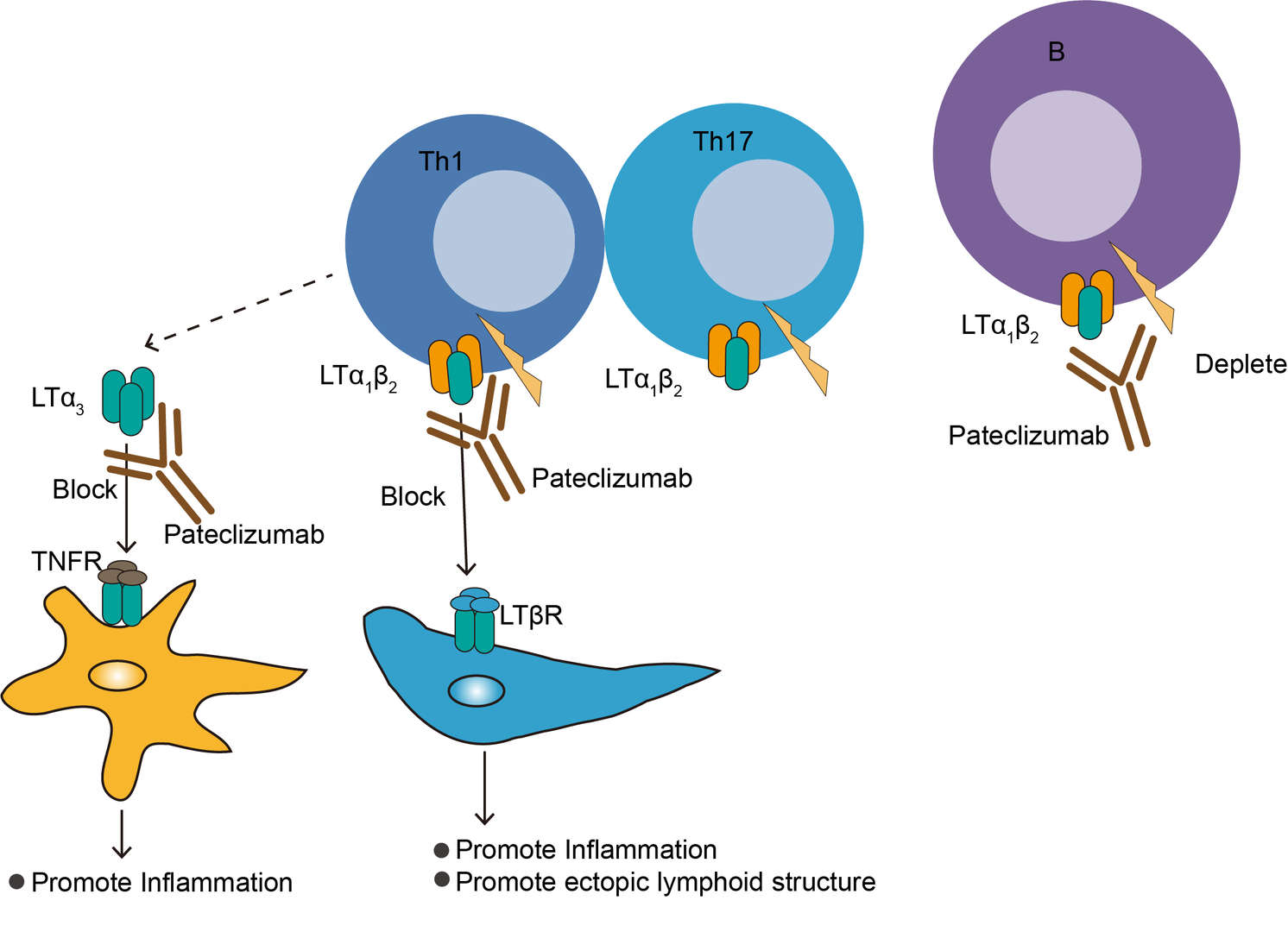

Pateclizumab Overview
Introduction of Pateclizumab
Pateclizumab, also formerly known as MLTA3698A, is an immunoglobulin G1 kappa (IgG1κ) monoclonal antibody targeting lymphotoxin alpha (LT-α) for the treatment of rheumatoid arthritis. It was developed as an immunomodulator by Genentech/Roche. A phase I study has assessed the safety, pharmacokinetics, and biologic activity of pateclizumab 2012, founding that pateclizumabwas generally well-tolerated in RA patients.
Mechanism of Action of Pateclizumab
LT-α is a member of tumor necrosis factor superfamily family (TNFSF) and products by predominately by activated cells of the innate and adaptive immune response. Lymphotoxin α formerly named tumor necrosis factor-beta (TNF-β) as it is a homologous protein to TNFα. When LTβ is discovered, TNF-β was renamed LT-α. LT-α plays different roles in immune regulation as its different secreted forms. LTα binds to TNF receptor 1 (TNFR1) and TNFR2 to promote inflammation as a form of soluble homotrimeric molecule (LTα3); whereas cell-bound LTα1β2 (LT-α complex with LTβ as LTα1β2 heterotrimers on the surface of activated B, Th1 and Th17 cells) bind LTβ receptors (LTβR) to mediate signaling pathway.
Rheumatoid arthritis (RA) is an autoimmune disorder associated with progressive joint damage, pain, fatigue, and disability. TNF α is reported to be the main factor promoting the development of RA, so targeting TNFα is regarded as the routine method of RA treatment. However, a large number of RA patients did not respond to TNFα therapy, which prompted us to seek new treatments. In addition to TNFα, other cytokines have also been reported to be involved in the pathogenesis of RA, and LT- α is one of them. It was found that two forms of LTα homotrimer (LTα3 and LTα1β2) increased in synovial fluid of RA patients, while the LTα, LTβ and LTβR transcripts increased in synovium respectively. Study has demonstrated that the depletion of CD4 T helper (Th) subsets Th1 and Th17 (with high levels of surface LTα1β2) by mouse LTα specific monoclonal antibody showed therapeutic efficacy in the preclinical mouse model of RA, which suggests the treatment possibility targeting LTα. Thus, humanized pateclizumab was designed to target LTα, binding to both the soluble LTα3 homotrimeric form and the surface-expressed LTα1β2 heterotrimer, for the treatement of RA. By blocking the binding of LTα3 and LTα1β2 to its cognate receptors LTβR and TNFR, pateclizumab specificly deplete of activated cells and inhibit the immune cell trafficking and/or recruitment to inflammatory sites. Depletion is limited to cells that express LTα1β2 on the surface, which improves the targeting of therapy.
 Fig.1 Mechanism of Action of Pateclizumab
Fig.1 Mechanism of Action of Pateclizumab
What We Provide
Therapeutic Antibody
Pateclizumab
We provide high-quality (IgG1κ type) for use in Neut, ELISA, IF, IP, FuncS, FC, ICC. For lab research use only, not for diagnostic, therapeutic or any in vivo human use.
For research use only. Not intended for any clinical use.
This site is protected by reCAPTCHA and the Google Privacy Policy and Terms of Service apply.

